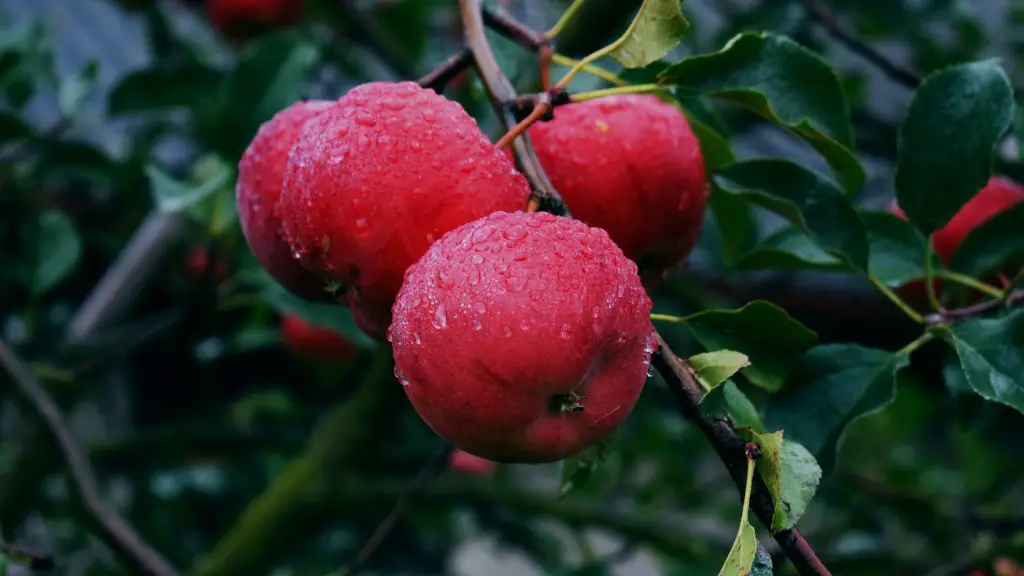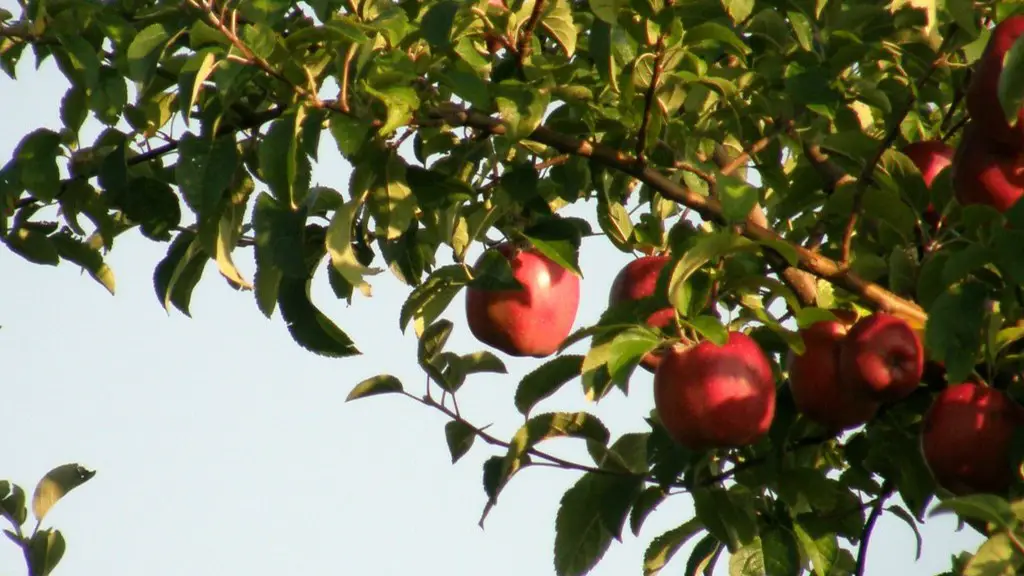Apple tree blossoms offer a picturesque reminder of the change of season, and the delight of spring is keenly felt around such fruit-bearing trees. As a result, it can be distressing for a gardener to see a promising bloom succumb to frost, which can damage the delicate petals and ultimately reduce the yield for the season. To protect delicate blossoms from frost, here are a few tips:
Firstly, create a frost shelter. This can be done using a large cloth or plastic sheeting, as well as stakes and strings. Cover the blossoms as much as possible and secure it with the string. This shelter will help disperse the cold and deflect unfavorable winds, reducing the risk of frost damage.
Secondly, try moving the plant if it is a young tree. If cold weather is imminent, transplant the tree to a temporary location. This can help provide a warmer night time climate when necessary.
Thirdly, spray water on the flowers. When frost is present, spraying the flowers with special irrigation systems can help provide a protective layer of ice on the surface of the petals. This coat of ice then resembles a kind of ‘thermal blanket’ for the blossoms.
Fourthly, consider using black plastic mulch. It can also be used to spread a protective shield over the flowers. Along with helping to prevent frost damage, it will also ensure adequate rainwater for the tree and keep soil temperatures from dropping too low.
Fifthly, use a frost protection sprays. When the weather forecasts a poor night for frost, these sprayers can be used to create a protective layer over the sensitive blooms. But make sure to check the label and follow instructions, as some sprays contain ingredients that can be harmful to the tree’s overall health.
Finally, reduce the nitrogen content of the soil. This helps to reduce stress on the apple trees and reduce the risk of sudden cold shock. Also, it is recommended to ensure a pH of 6.5 or lower. The lower the pH of the soil, the better it is for the tree’s blooms.
Maintaining Warmth Around the Tree
To prevent the loss of blossoms due to frost, the overall tree must be kept warm. Consider ways to maintain the warmth in and around the tree including:
Firstly, check the tree regularly to identify any weak limbs or branches. Weak limbs may not be able to withstand cold weather and could lead to breakage. It is also important to keep the area free of obstructions and clear of weeds, which can act as a welcome mat for frost.
Secondly, do not place the tree in an area that is prone to rapid temperature shifts. Close to buildings, for instance, can create hot and cold spots. Instead, plant the tree in an area which can benefit from warmer temperatures that are not affected by drastic fluctuations.
Thirdly, ensure the tree gets enough sun in the afternoon. The sunlight helps the tree stay warm during the cold evenings.
Fourthly, consider adding insulation materials around the trunk of the tree. Makeshift shelters, for instance, are easy to make and can protect the tree from cold drafts. Or, use burlap and blankets to help trap heat from the sun.
Fifthly, add mulch made of leaves, straw, and compost. The layer of mulch, when maintained, can act as insulation and protect against severe temperature fluctuations.
Frost Protection Solutions
Frost protection solutions can be found in a variety of items such as cloth, plastic sheeting, and blankets. The following can be used as an added layer of frost protection:
Firstly, create a temporary shelter by using a tarp or cloth. Spread it over the tree and anchor it down with stakes. This can help protect against frost damage.
Secondly, water the tree during the late afternoon. Watering during the afternoon can help protect against a sudden and unexpected dip in temperature. The warmth of the water will help to protect the tree and its blossoms.
Thirdly, use frost blankets. Frost blankets are made of robust insulation materials and can be used to protect the trees when nighttime temperatures decrease. Be sure to cover the entire tree with the blanket, ensuring that the edges of the blanket have been sealed off properly.
Fourthly, consider sprinkling a protective layer of sugar water on the blossoms. The sugar helps slow the movement of water from the bloom and also helps to thermal stabilize the plants.
Finally, use a windbreak. This can be a wall, fence, or whatever other structure that can reduce strong winds from hitting the tree. This helps to keep the temperature around the tree more constant.
Fertilizing the Tree
Fertilizing is key to improving flower health and minimizing the risk of frost damage. Here are a few tips:
Firstly, use a balanced fertilizer that is appropriate for apple trees. It should have equal parts nitrogen, phosphorus, and potassium often referred to by the acronym N-P-K. Secondly, fertilize the tree based on its age and soil quality. The concentration of fertilizer will depend on the age of the tree and the soil type that it is in.
Thirdly, use a fertilizer supplemented with zinc and magnesium. These two micronutrients play a vital role in the development of healthy blooms and in protecting the tree from frost.
Fourthly, treat the tree with a fungicide to reduce the attack of any fungi or bacterial diseases that may occur during frost. This can help protect the tree and its blossoms from frost damage.
Finally, use compost as mulch. Compost is a great source of fertilizer for the tree and helps to improve soil fertility and moisture. This will help protect the blossoms from frost and promote healthier blooms.
Pruning the Tree
Pruning is another important step in the process of frost protection. Proper pruning will allow more sunlight and air to reach the base of the tree, and help promote healthy blossoms. Here are a few guidelines when pruning your tree:
Firstly, use sharp pruners to avoid damaging the skin of the branches and fruit. Secondly, prune the tree carefully and only trim away the overgrown or damaged branches. Do not use any kind of chemical spray or fertilizer on the branches during the winter.
Thirdly, prune the tree several weeks prior to blooming. This gives the tree time to adjust to the pruning and will help promote healthy blossoms when the time comes.
Fourthly, prune off any dead branches and remove any diseased twigs. Doing so will help to improve overall health of the tree and reduce the risk of blight and fungal damage.
Finally, prune off any low-hanging branches. This will help improve the sunlight available at the base of the tree, thus promoting better blooms come spring.





